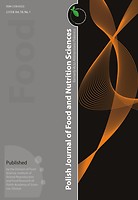
Photo from archive.org
Packaging is the fi nal part of the processes involved in the production of food and non-food products purposely to increase shelf life, improve consumer acceptance, and as a means… Click to show full abstract
Packaging is the fi nal part of the processes involved in the production of food and non-food products purposely to increase shelf life, improve consumer acceptance, and as a means of providing support for the distribution and expansion of product marketing [Prasteen et al., 2018]. The major material used for this purpose is plastic and this has led to a continuous increase in its waste thereby causing environmental pollution because it is non-biodegradable, its recycling process is quite expensive, and it has the ability to contaminate foods [Ogunrinola & Akpan, 2018]. There is, however, the urgent need to fi nd alternative materials for packaging and one of these is the bioplastics due to its safe and biodegradable nature. Bioplastics are produced from renewable natural materials and have been observed to have the potentials of being
Journal Title: Polish Journal of Food and Nutrition Sciences
Year Published: 2020
Link to full text (if available)
Share on Social Media: Sign Up to like & get
recommendations!